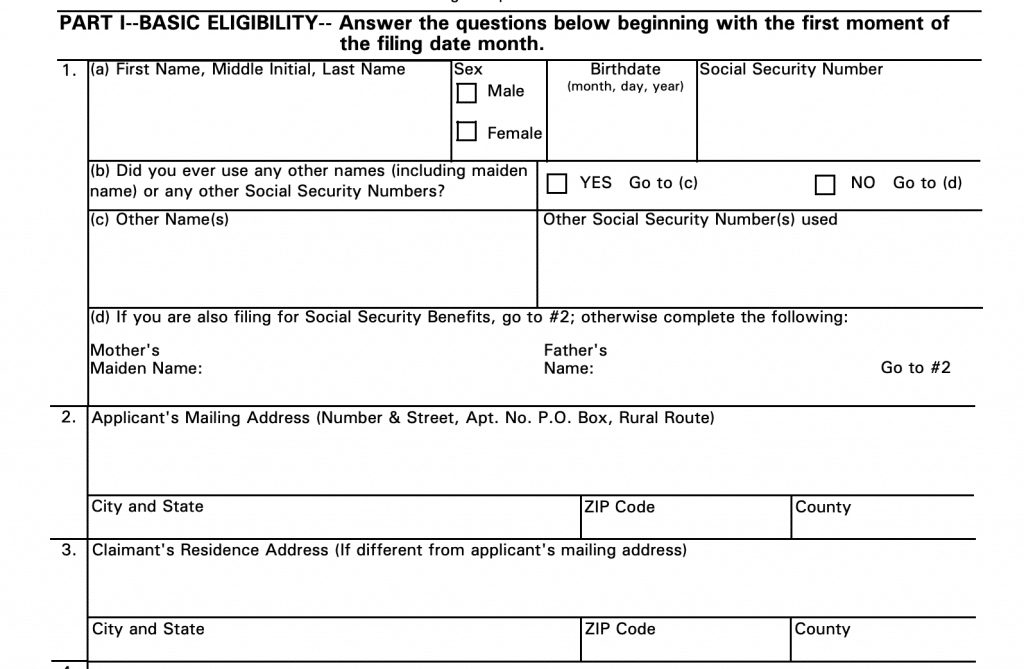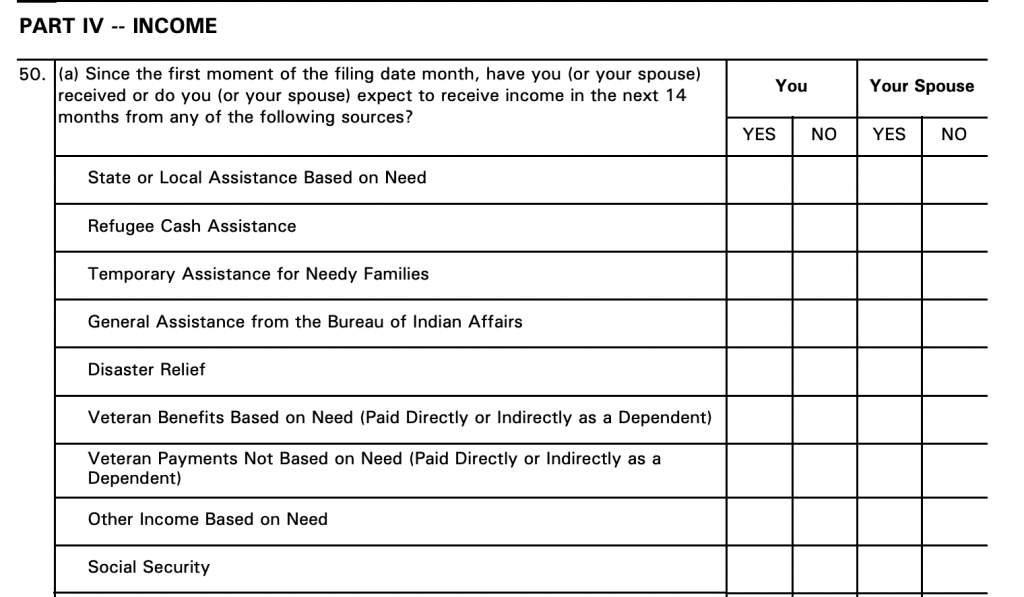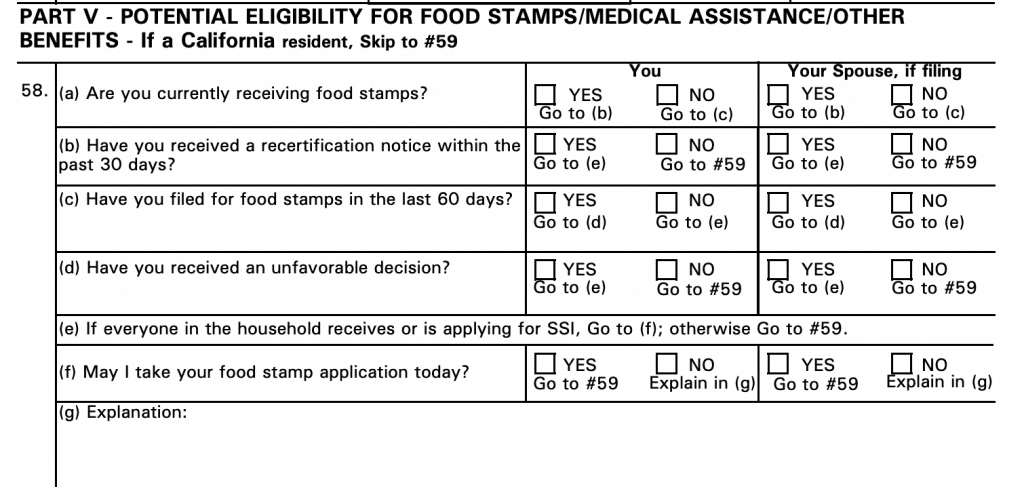With the rising cost of living, many Americans are struggling to cover basic essentials, like food, medicine, and housing. This financial squeeze is making it hard for many families to ensure their well-being. If you’re facing such challenges, the Supplemental Security Income (SSI) program might be able to help.
SSI is designed to support those who are elderly, blind, or disabled and have little to no income. It provides monthly payments to help meet basic needs for food, clothing, and shelter. Applying for SSI could be a step toward easing the financial burden and improving your quality of life.
Starting the application process for SSI might seem daunting, but it’s an important first step in getting the support you need. The program is available to help individuals and families who are facing tough times, offering a financial lifeline to those who qualify.
📝 Where to Download the SSI Application

Starting your application for Supplemental Security Income (SSI) is crucial if you’re in need due to age, disability, or blindness. This process is overseen by the Social Security Administration (SSA), which ensures that all necessary information is gathered to determine your eligibility for benefits. By providing detailed information, you help the SSA to accurately assess your situation and support your needs.
Online Form:
The Social Security Administration offers an online platform where individuals can apply for Supplemental Security Income, making the process accessible and convenient from the comfort of your home.
👉Apply for SSI Through the Portal:
Paper Form:
For those who prefer a traditional approach, the Social Security Administration provides paper forms for Supplemental Security Income (SSI) applications, available for download or pickup at local offices, ensuring accessibility for all applicants.
👉Download Supplemental Security Insurance Application Form: https://www.ssa.gov/legislation/Attachment%20for%20SSA%20Testimony%207_25_12%20Human%20Resources%20Sub%20Hearing.pdf
Child Applications:
Applying for Supplemental Security Income (SSI) for a child may require downloading and submitting several forms, including a disability report for detailed information on the child’s condition, a questionnaire, and, if relevant, a certification of low birth weight form.
👉Download Disability Report – Child:
https://www.ssa.gov/forms/ssa-3820.pdf
👉Download Questionnaire for Children Claiming SSI Benefits: – https://www.ssa.gov/forms/ssa-3881.pdf
👉Download Certification of Low Birth Weight for SSI Eligibility: https://www.ssa.gov/forms/ssa-3830.pdf
🔍 A Closer Look at the Supplemental Security Insurance Application
Next, we’ll explore the information needed to fill out the Supplemental Security Income (SSI) application, Form SSA-8000-BK
👤PART I: Basic Eligibility

In the basic eligibility section of the Supplemental Security Income (SSI) application, you’ll need to fill out important personal information that helps determine if you qualify for the program. This includes your legal name and mailing address to make sure you get all the necessary information sent to you. You’ll also provide your direct deposit information for receiving benefits, your marital status since it might affect your eligibility and benefit amount, and details about your disability and citizenship.
🏠 PART II: Living Arrangements

The living arrangements section of the Supplemental Security Income (SSI) application focuses on your current living situation. It asks where you live, like in a house, non-institutional care setting, institution, or if you’re homeless. This part is important because your living situation can affect your SSI benefits.
You’ll also need to describe your household, including who lives with you. For each person, you’ll mention their income and share of the expenses. This information helps the Social Security Administration figure out how much SSI support you qualify for, as it can change based on these living and household details.
🏦Part III: Resources

In the resources section of the Supplemental Security Income (SSI) application, you’ll provide details about your assets. This part looks into what you own, like any vehicles, life insurance policies, investments, real estate, and the balances in your bank accounts.
The SSI program needs this information because it has limits on the amount of resources you can have and still qualify for benefits. By understanding what assets you have, the program can determine if you’re eligible for SSI and how much assistance you might receive.
It’s important to be honest and thorough when filling out this section to ensure your application is accurately reviewed.
💰Part IV: Income

The income section of the Supplemental Security Income (SSI) application asks about the money you earn each month from different sources. This includes any wages from jobs, benefits from other programs, support from family or friends, and any other income.
The SSI program looks at your income to decide if you qualify for benefits and how much you should get. Your monthly income affects your eligibility because SSI is meant to help those with limited income.
When filling out this part, it’s important to list all your income sources to give a clear picture of your financial situation.
🍎🏥 Part V: Potential Eligibility for Other Benefits

This section of the Supplemental Security Income (SSI) application addresses your potential eligibility for food stamps, medical assistance, and other benefits. This helps identify whether you could qualify for more help beyond SSI, like food assistance or healthcare services. The information you provide here can connect you with other valuable resources, and ensure you’re getting the full range of support available to you.
Being open and detailed in this section can open doors to other assistance that can make a significant difference in your daily life.
🤝Part VI: Miscellaneous

The miscellaneous section of the Supplemental Security Income (SSI) application is only relevant if you’re applying for benefits on behalf of someone else. In this part, you’ll indicate whether you wish to be a representative payee.
A representative payee is someone who manages the SSI benefits for the beneficiary, ensuring that the funds are used for the beneficiary’s needs and well-being. This role is important for beneficiaries who might not be able to manage their finances due to age, disability, or other reasons. If you choose to be a representative payee, you’re taking on the responsibility of overseeing the SSI benefits to support the beneficiary’s expenses and care.
💭Part VII: Remarks

The remarks section of the SSI application gives you space to add any extra explanations or information about your application that you think are important. This is your chance to clarify anything that might not be fully explained by the form’s standard questions.
For example, you might want to give more details about your living situation, health condition, or income. This section helps make sure that those reviewing your application understand your unique situation as clearly as possible.
✍️Part VIII: Important Information and Signatures

The signature section on the Supplemental Security Income (SSI) application is where you sign to confirm that the information you provided is correct. By signing, you also allow the Social Security Administration to check your financial records to make sure the information in your application is accurate.
🔄 Reporting Changes After Applying for SSI Benefits
After you apply for Supplemental Security Income benefits, it’s important to let the Social Security Administration know if there are any changes in your situation. Reporting these changes helps ensure your benefit amount is correct and prevents issues with your eligibility. Here are some key changes you need to report:
Where You Live:
- If you move to a new place.
- If you or your spouse leave home for a month or more.
- Changes in your living situation, like entering or leaving a hospital, jail, or another country.
How You Live:
- Changes in who lives with you.
- Changes in household expenses.
- Significant life events like births, deaths, marriage, or divorce.
Income:
- Starting or stopping a job, or changes in how much money you make.
- Changes in other income, like child support, benefits, or winnings from gambling.
Help You Get from Others:
- Changes in the help you receive, like money, food, or payment of household expenses.
Things of Value That You Own:
- If the total value of what you own goes over the limit.
- If you buy, sell, or are given something of value.
If You Are Blind or Disabled:
- Any improvement in your condition or if you start working.
For Children Under 18:
- Changes in income or assets for the child or their family.
- Changes in the child’s student status or family situation.
If You Are Under 22 and Unmarried:
- Changes in your school status, marital status, or work situation.
Your Immigration Status:
- Any changes need to be reported.
If You Are a Representative Payee:
- Any of the above changes for the person you’re representing.
- If you can no longer be a representative payee.
If There Is a Warrant for Your Arrest:
- For certain crimes, you must report if there’s a warrant for your arrest.
Keeping the SSA updated with these changes ensures your SSI benefits reflect your current needs and prevents overpayments or penalties for not reporting.
How to Submit Changes to the Social Security Administration: https://www.ssa.gov/ssi/reporting/changes
✅ Get Started on Your Application for SSI Benefits

If you’re facing financial challenges due to age, disability, or other qualifying factors, the Supplemental Security Income (SSI) program is here to help. This program provides assistance to those in need, offering a financial lifeline that can ease the burden of everyday expenses.
Taking the first step by filling out your SSI application can lead to the support necessary for improving your quality of life. Don’t delay if you need this assistance—starting the application process today is the key to accessing the benefits that can make a meaningful difference in your life.